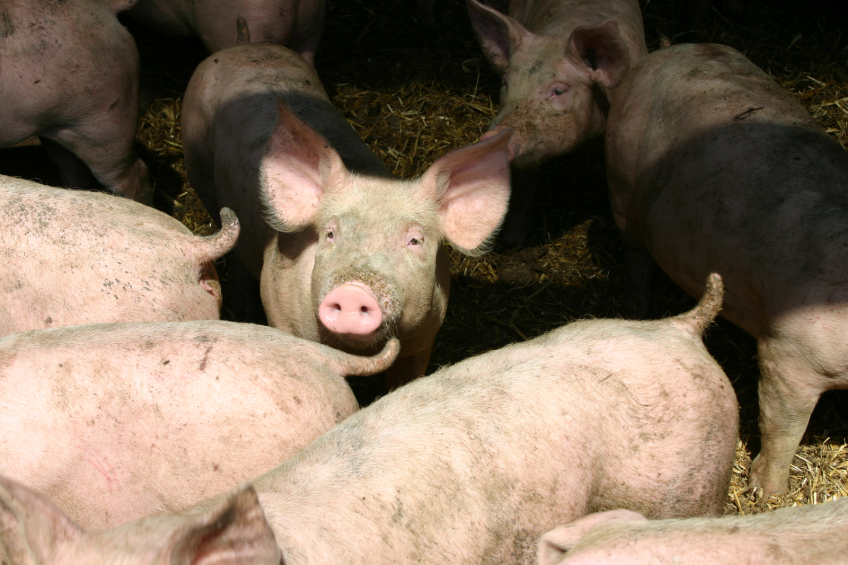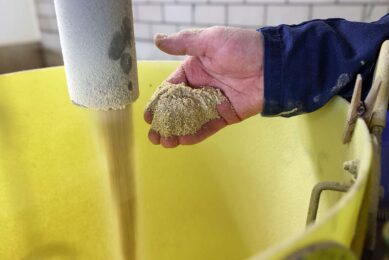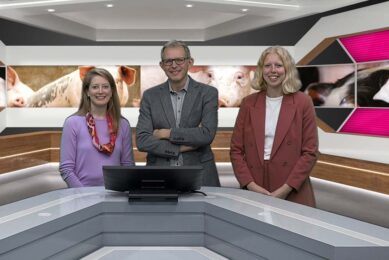Pig eco-shelters help to reduce GHG

Greenhouse gas emissions (GHG) are 38% lower in eco-shelters and 88% of the variability in production systems with common effluent management systems is related to herd feed conversion.
These were conclusions of recently published research, called ‘Environmental impacts and resource use from Australian pork production assessed using life-cycle assessment (LCA)‘ and managed by Stephen Wiedemann while with FSA Consulting. The study was co-ordinated by the Cooperative Research Centre for High Integrity Australian Pork.
In a press release, it is stated that the study is the first comprehensive study using LCA to benchmark greenhouse gas emissions from pork across the full production system. The project included emissions from feed production, housing, manure management and meat processing and assessed 14 production units across different states and different production systems for at least 12 months.
Average emissions to the farmgate
Average emissions to the farmgate were 3.6 kg CO2-e/kg liveweight pork and 6.36 +/- 1.03 kg CO2-e/kg wholesale (chilled bone-in) pork. The lowest modelled emissions were from a Queensland production farm using CAP-CHP systems (1.5 kg CO2-e/kg liveweight), which is similar to Queensland chicken meat production (1.3 kg CO2-e/kg liveweight).
Pork CRC CEO, Dr Roger Campbell, said it was interesting that deep litter housing resulted in a 38% reduction in greenhouse gas emissions, compared to conventional housing and biogas capture with heat and power generation resulted in a 31-64% reduction in greenhouse gas emissions from conventional housing. Outdoor production (in Western Australia) also resulted in considerably reduced greenhouse gas emissions.
On-farm biogas capture and power generation
Campbell added, “Pork CRC’s Bioenergy Support Program has helped drive quite a move towards on-farm biogas capture and power generation and I expect GHG emissions to decline substantially over time.”
Campbell pointed out that Wiedemann’s finding for similar manure management systems was interesting, as 88% of the variability in greenhouse gases could be predicted from differences in herd feed conversion (HFC), making it the most important production related indicator of GHG emissions.
Across the farms, herd feed conversion ranged from 2.4 to 3.3 on a liveweight basis (3.2 to 4.3 on a carcass weight basis) and feed wastage ranged from 5.5-7.5% of total feed used.
These values represented 15.2 to 20.4 kg of feed lost per 100 kg of liveweight produced. Individual units within farms had HFC values approaching 3.8 on a liveweight basis.
Campbell said, “These results show that HFC also influences carbon emissions from pork production, so it’s a double whammy when also considering HFC’s profitability upside and clearly more needs to be done to reduce feed waste and improve HFC. Based on these results and those from Pork CRC’s benchmarking project, some producers have it under control and others have some way to go.”
Dr Rob Wilson, leader of Pork CRC Program Four, ‘Carbon Conscious Nutrient Inputs and Outputs’, said such a comprehensive attributional investigation of pork production from major production regions and different production systems, utilising six case studies and analysis of the national herd, demonstrated the potential for Australia’s pork industry to markedly reduce GHG emissions and move towards Pork CRC’s aspirational goal of 1 kg CO₂-e/kg LW.”
 Beheer
Beheer








 WP Admin
WP Admin  Bewerk bericht
Bewerk bericht